
“Decide, my dear; better mistakes than paralysis.”
These are Julie’s words, a woman overflowing with energy, prevented from moving during the 22 years of her paralysis. An active girl in Cuvilly, traveling, shopkeeper, comforting the sick, leading the parish, Julie lost the use of her legs at the age of 31 years and would only regain her active life at the age of 53. During the 12 years that remained of her life, she displayed an intense activity, completely devoting herself to the realization of her apostolate, the Christian instruction of poor girls. The long days of inactivity and pain during her paralysis taught her to appreciate the joy of being able to perform the simplest tasks!
The circumstances of her paralysis
In 1774, Julie was speaking with her father at home, when a large rock was thrown through the window and a shot was heard.
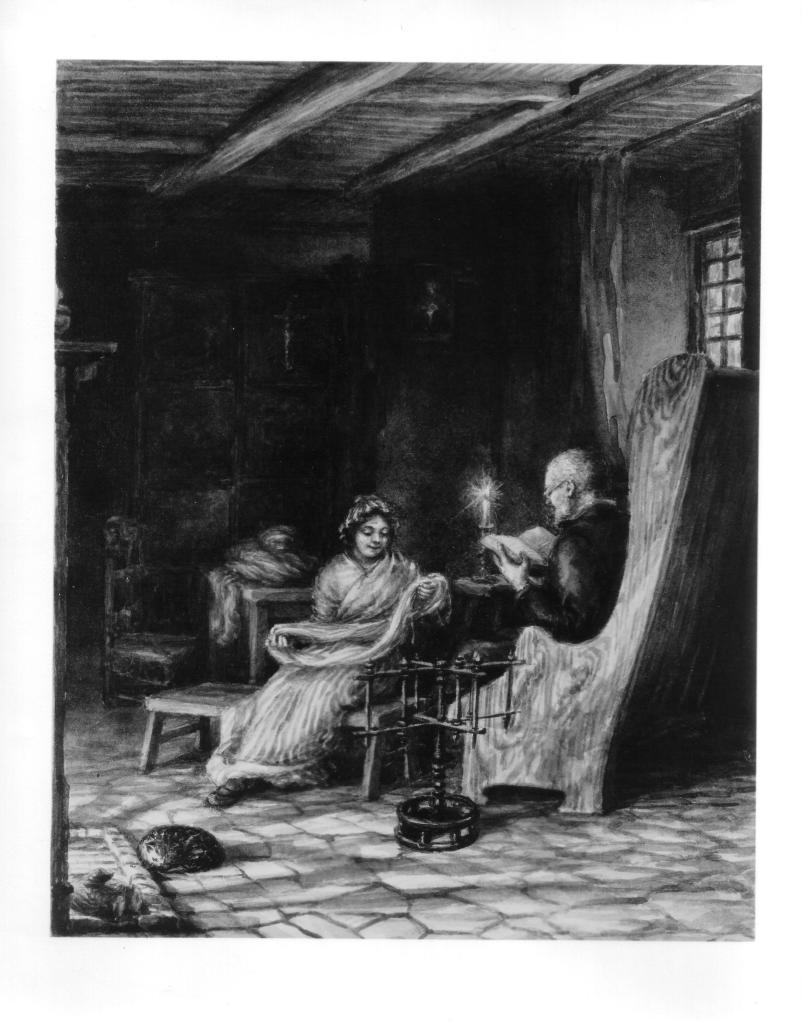
Neither Julie nor her father were hurt but this attack caused such an extreme shock to her overworked body that it was the cause of a serious illness. In 1782, an epidemic erupted and the unenlightened doctors thought it was best treated by bleeding the feet. The village surgeon submitted Julie to such abundant bleedings that, little by little, she was deprived of the use of her two legs and she had to stretch out on a bed that she would not leave for 22 years.
The importance of prayer during her illness
Formerly so active, Julie waited on an invalid’s bed and she drew strength in her faith passing several hours each day in prayer.
In “To Heaven on Foot,” (1969), Sister Mary Linscott writes:
“Julie conceived prayer as the key force in a cycle which bore the soul to God and then, in him, poured it out in the service of others.”
“Julie said to Sister Stephanie Warnier that during the course of the first eight years of her paralysis, she knew neither isolation nor weariness because she was filled with the presence of God and was sustained by the strength and joy of which the effects were almost tangible. It is during these years of paralysis that Julie became aware of the divine paradox that action is accomplished in inaction. Julie was energetic by nature; however, she accepted no longer being able to walk because she saw in it the will of God. Physically inactive, without plans for the future, Julie learned in the school of suffering and silence the lessons that she would one day teach with all the strength of a return to health. When, at the age of 53, she took up her active life, she fully appreciated the paradox in the of the weak things of the world that the providence of God uses to realize great works. Her joy and confidence in God never weakened.”
The circumstances of her cure
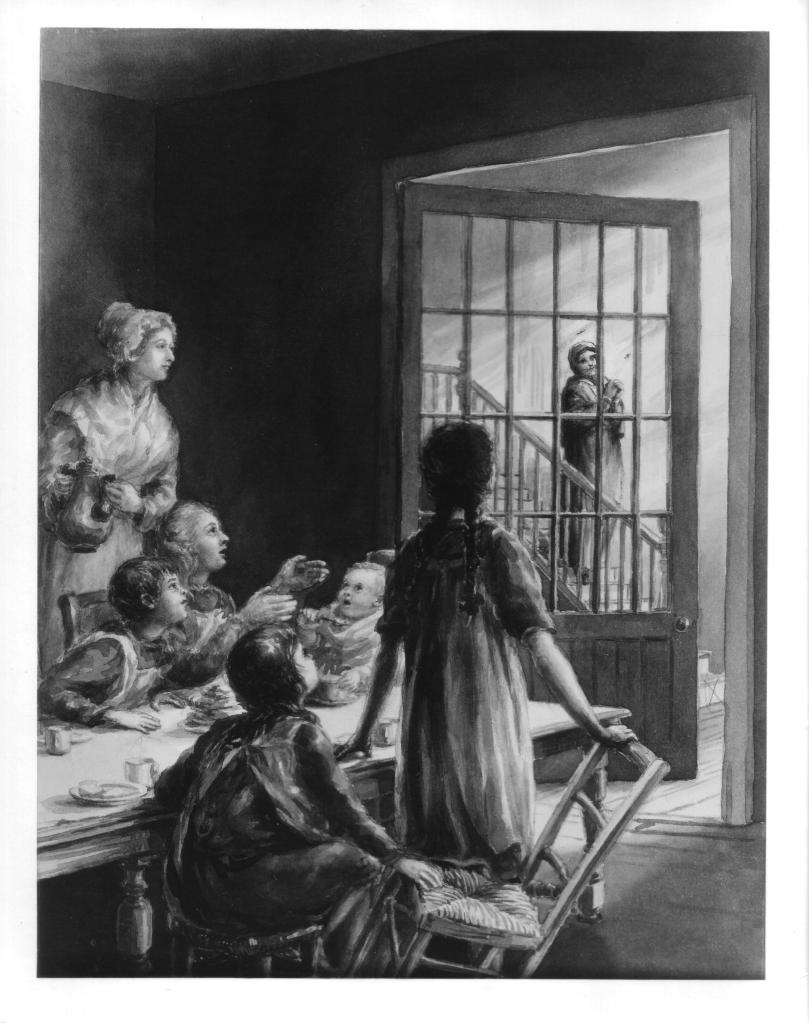
On February 2, 1804, Julie founded the Congregation of the Sister of Notre Dame with Françoise Blin de Bourdon. Since her legs were still paralyzed, Julie experienced some difficulties actualizing her apostolate. On a beautiful morning, Father Enfantin, a Father of the Faith, suggested that she make a novena to the Sacred Heart, without telling her the reason. Julie accepted and, on June 1, 1804, she was miraculously cured.
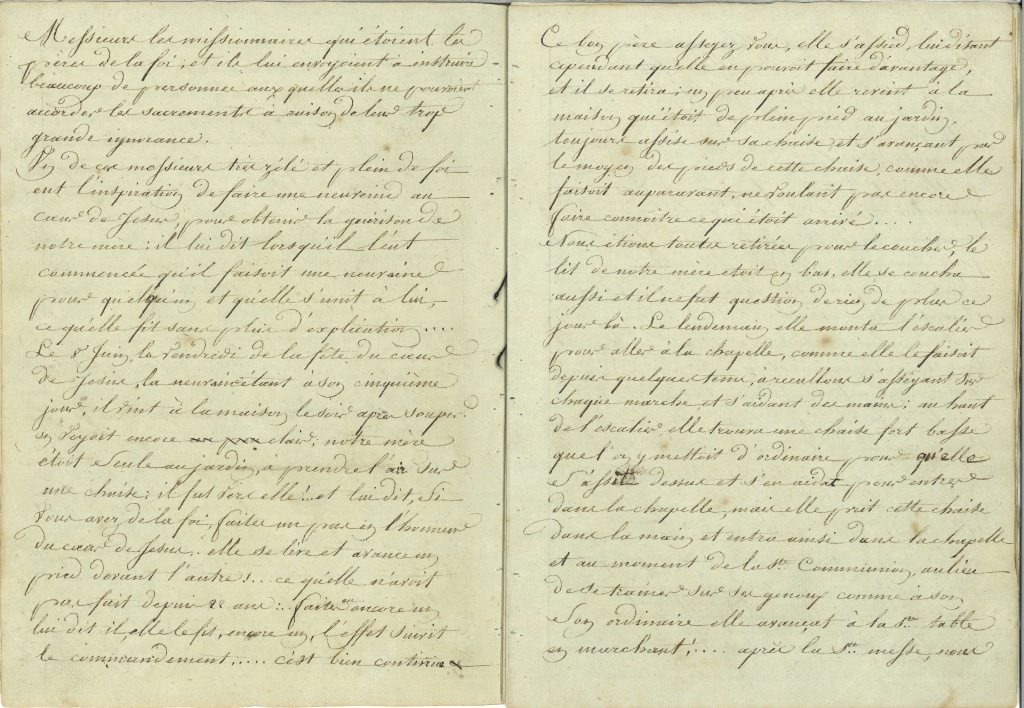
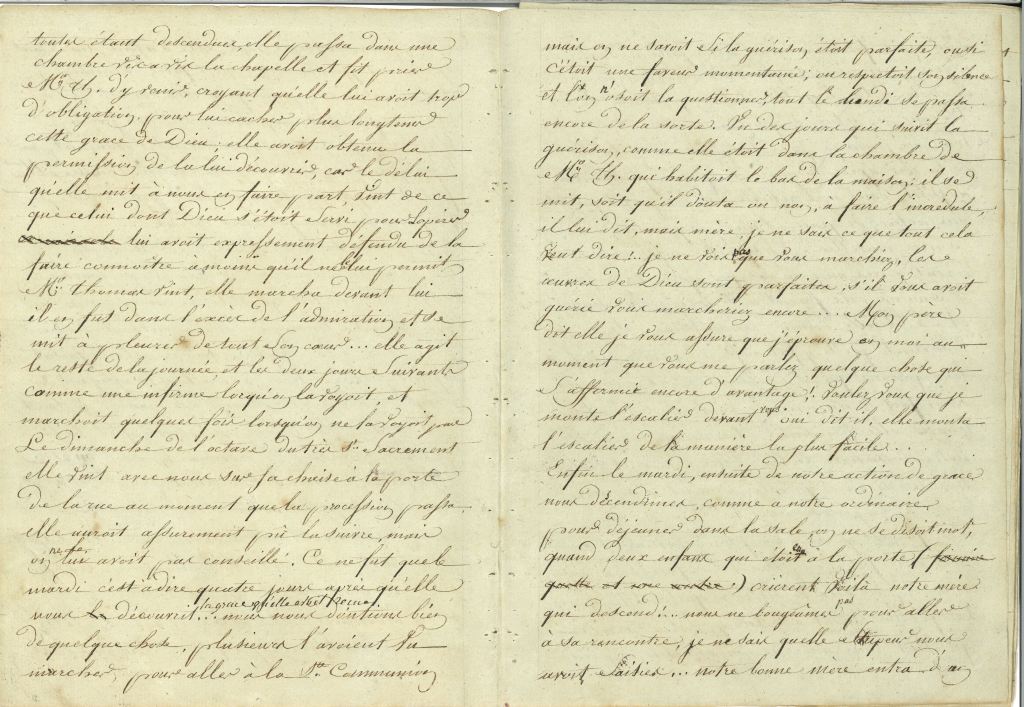
In her Memoirs, Françoise wrote: “One of the missionaries, Father Enfantin, was so zealous and full of faith that he was inspired to make a novena to the Sacred Heart to obtain our mother’s cure. When he began, he merely told Julie that he was making a novena and requested her to join him, which she did without questioning.
On June 8, Friday, Feast of the Heart of Jesus [In reality, the cure occurred on June 1st and not the 8th as Mother Saint Joseph indicates.] , the fifth day of the novena, when Mère Julie was in the garden alone, Father Enfantin came to the house, in the evening after supper while it was still light. Mère Julie was in the garden alone, in her chair to take some air. He came up to her and said: “If you have faith, Mother, take a step in honor of the Heart of Jesus.” Julie rose and took a step, something she had not done for twenty-two years.” “Take another,” he said. “Another.” Then, “That will do; you may sit down now.” Julie took her seat, though she assured Father that she was able to walk even further. “
Henceforth, Julie was able to participate in the Amiens mission preached by the Father of the Faith and, then, she accompanied them to Saint-Valéry-sur-Somme and at Abbeville where she evangelized the populace.
In “To Heaven on Foot,” Sister Mary Linscott speaks to us of this cure:
“A careless surgery had so damaged one bone in her foot that the doctor, who was asked to verify her relics when they were exhumed in 1888, hesitated to authenticate it, as he said that a person with such a malformed bone could never have walked at all. Julie knew that she walked in virtue of a miracle. In 1804 she had taken her first steps after twenty-two years of helplessness, in obedience to a command: ‘If you have any faith in the Sacred Heart, take a step forward.’ Whether the power of walking was restored by rectifying the surgeon’s clumsiness or simply in spite of it, she never paused to question. It sufficed for her that God had restored her health and energy. Her one ambition was to use both for his glory.”
Concerning the influence of the Fathers of the Faith
Thanks to a caring Faith of the Faith, Father Enfantin, Julie regained the use of her legs and was able to begin her apostolic vocation.
In 1799, a new society called the “Fathers of the Faith” was formed in the spirit of the Company of Jesus (suppressed in 1773). Although Julie does not clearly mention the Ignatian inspiration in her work, this is evident. The Fathers of the Faith were present at important moments in the foundation of the Congregation as at the time of her cure.
Among them, we can cite Father Enfantin who invited Julie to stand up while in the middle of a novena to the Sacred Heart but also Father Thomas who said Mass in Julie’s room at the Blin town home in Amiens and fled to Bettencourt with Julie and Françoise. Father Varin invited Julie to work for the glory of God and offered the first rule to the community or Father Leblanc who accompanied Julie to Flanders where she would establish several schools. On October 14, 1805, Julie took, moreover, the name of Sister Saint Ignatius.
Concerning her devotion to the Sacred Heart
It’s not for nothing that her miraculous cure proceeded in the name of the Sacred Heart. Julie had grown up with a strong personal attachment to the devotion to the Sacred Heart. Elle propagated it in Cuvilly, introduced it in Belgium and left it as a heritage in the Congregation.
As we have already mentioned in the theme for the month of March, Julie had a devotion to the Sacred Heart as did other members of her family. In her juridical deposition made in Beauvais in 1882, Madame Victoire Berthelot (great-niece of Julie Billiart) attested that the cult of the Sacred Heart was transmitted as a heritage: My mother told us: ‘I pray to the Sacred Heart, children. Preserve this devotion. It is a family devotion.’”
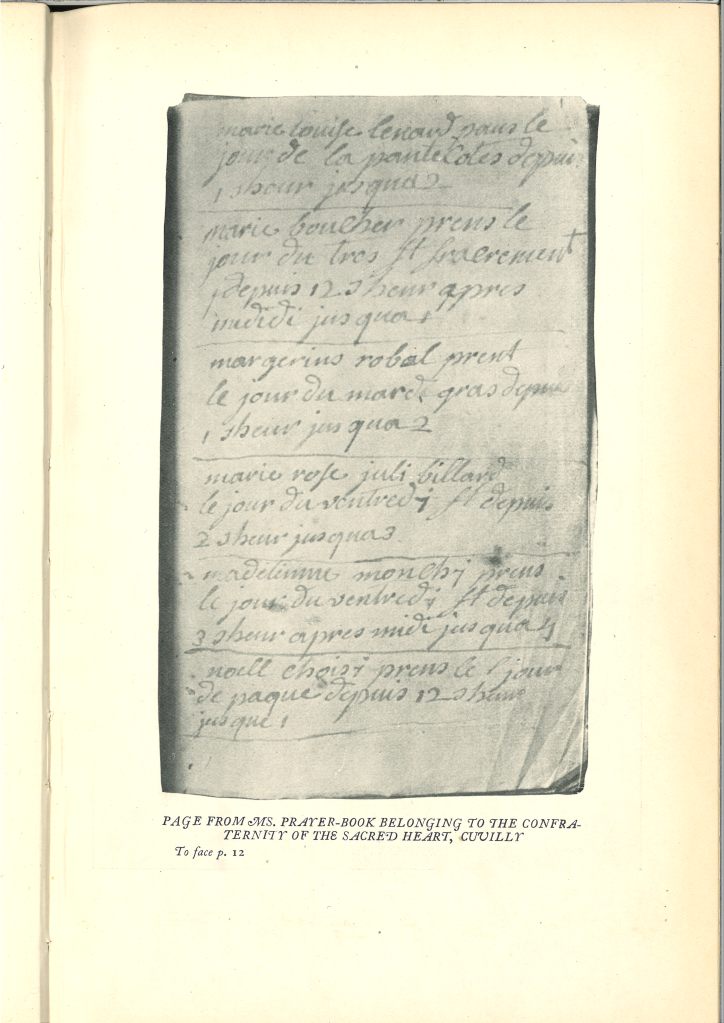
Importance of walking during the last twelve years of her life
After 22 years of paralysis, Julie never was able to hope to walk again. In a space of ten years, she undertook many trips in a stagecoach, on the back of a donkey or even often on foot in order to establish schools for poor girls. Although she accorded the greatest importance to prayer, Julie spent the last years of her life on the road, caught up in action.
In the General Archives in Namur, one can find a little note on which Françoise counted Julie’s trips: 120 in ten years!
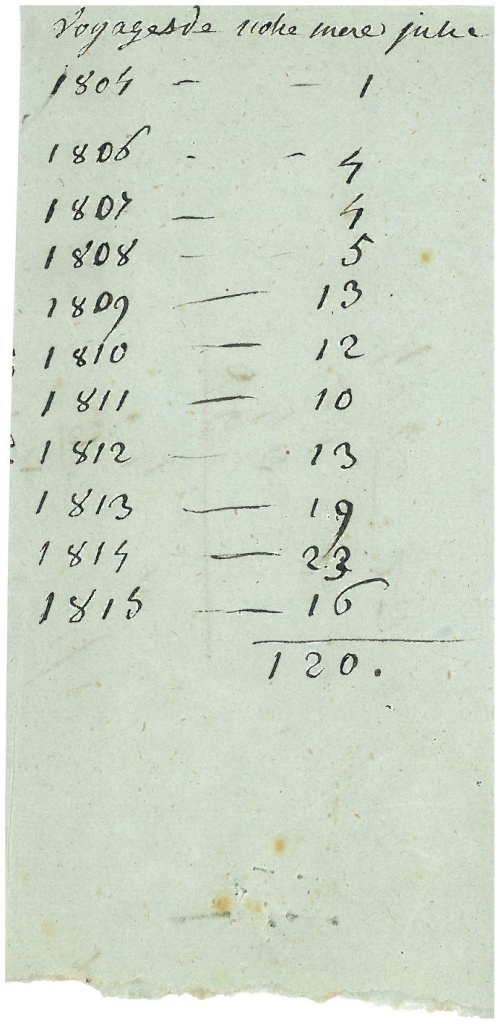
According to a study of Sister Mary Hayes, Julie would have made, in reality, 119 trips. But if one takes into account the many times that Julie redirected her travels in order to cover a broad range of preoccupations, Sister Mary Hayes estimates that Julie’s trips would reach the number 378.
Julie established the first schools in Amiens, Saint Nicolas, Namur, Montdidier, Rubempré and Jumet without needing to cross boarders since Belgium did not yet exist. If, in Amiens, they frowned on Julie’s travels, it was not the same in Namur where she was supported by Monsignor Pisani who was in favor of all her actions on behalf of her establishments. She traveled for miles to assure a welcoming home for the sisters and their students. In 1809, she was at Saint Hubert; in 1810, it was the foundation of Nouveau Bois in Ghent and, in 1811, the installation at Zele. In spite of war during the last years of the Napoleonic regime, Julie still pursued her work of education by opening schools in Andenne, Gembloux and Fleurus.
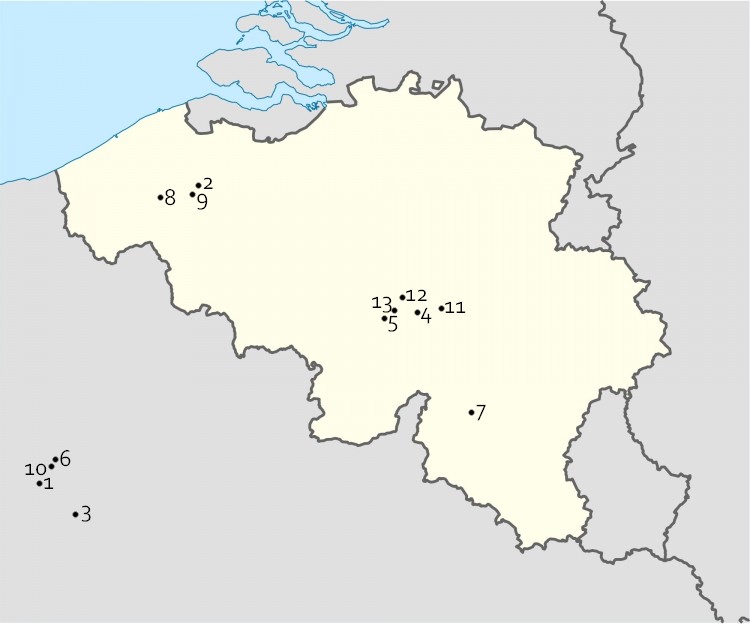
- Saint Nicolas (1806)
- Montdidier (1807)
- Namur (1807)
- Jumet (1808)
- Rubempré (1808)
- Saint Hubert (1809)
- Ghent (1810)
- Zele (1811)
- Raineville (1812)
- Andenne (1813)
- Gembloux (1813)
- Fleurus (1814)
Her strength of soul
How was Julie, a girl so active during her youth and who did not spare any effort to help her parents, able to find strength during her long years of illness? Among Julie’s most striking characteristics, her contemporaries relate, in particular, her greatness of soul and her courage. Struck by so many trials, among which was her illness, she didn’t let them get her down. On the contrary, she placed her confidence in God, whose “will expressed itself in all things.” She gave proof of a courage, a lucidity and a sense of humor which affected all who knew her.
Sister Mary Linscott speaks to us of this fortitude that Julie exercised:
“Fortitude is a great gift and a root of greatness. It is the quality of attack, of strength, vigor and energy. Positively, it brings confidence, with power, success and limitless desire; negatively, it gives rise to the refusal to give in, to endurance and perseverance, and to patience.
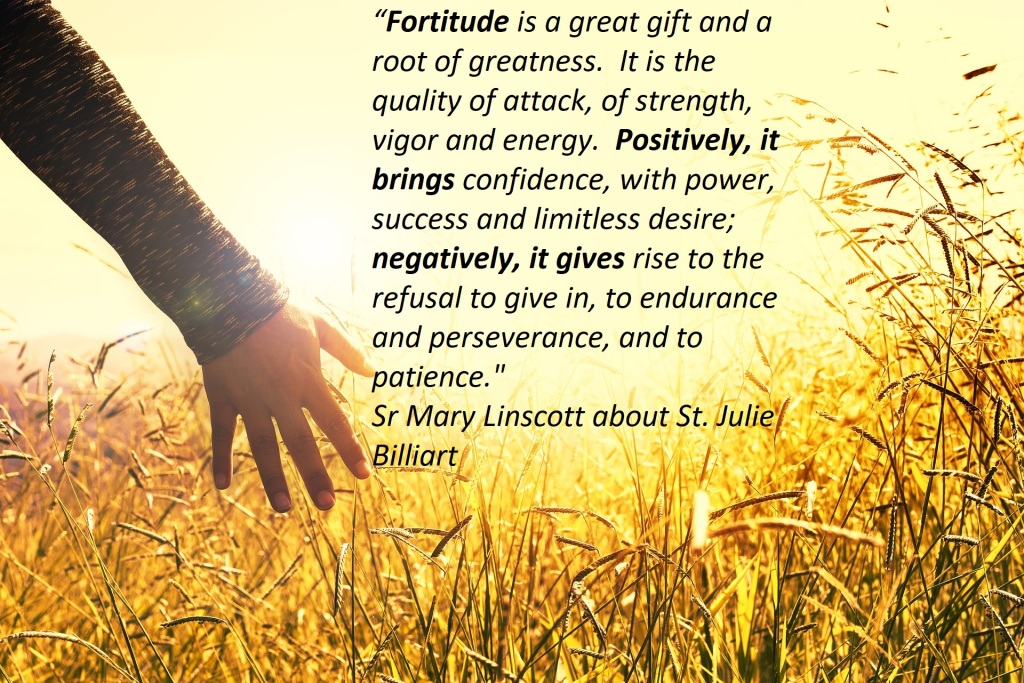
Saint Julie wrote: “More than ever I see the need of strong, brave, generous souls, manly souls, who are afraid of absolutely nothing on this earth except sin and displeasing God…. Come on now, courage! courage! courage! but a manly courage, my dear sister, don’t let any difficulty ever put us off… We need brave apostolic souls for our vocation, those who are not afraid of difficulties and who have no reserves with God…. If we only have a middling virtue, the work won’t last, it needs souls of steel to hold firm in the world we live in.”
